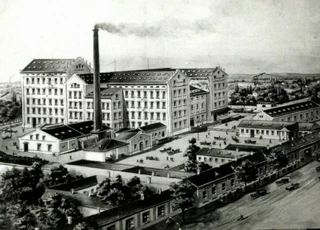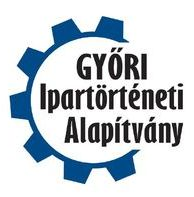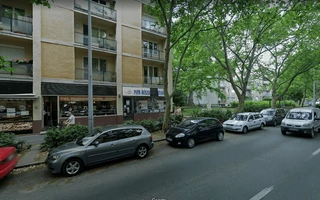Contact details
Foundation for Industrial History of Győr
Szent István út 10/a
Phone:
+3696520274
Fax: +3696520291
E-mail:
ipartortenet@ipartortenet.hu
Map
Back Hermann Győr roller mill
| Address of the memorial site, route planning | ||
| What can we see at the memorial site? | ||
| Brief overview | ||
| Related gallery |
| MEMORIAL SITE ADDRESS, ROUTE PLANNING |
Győr, Bartók Béla Street 33.
Area bounded by Bartók Béla út, Tihanyi Árpád út, Álmos út
| WHAT CAN WE SEE AT THE MEMORIAL SITE? |
Street view:
Bartók Béla Street tenement houses, Bartók Béla Monument, Bartók Béla Street 33.sz.
The Back Mill building complex once stood in Nádorváros, in the area bordered by Bartók Béla Street and Tihanyi Árpád Street, including today's Mill Grove, which preserves the memory of the industrial company in its name.
| BRIEF OVERVIEW |
|
Back mill around 1910 Source: https://regigyor.hu/nadorvaros/tuz-a-back-malomban-1907/
Back Hermann, of Austrian origin, purchased the Fischer steam mill founded by János Thoma in the mid-1840s, which had undergone several changes of ownership and was no longer in operation. The completely rebuilt, modernized enterprise, operating with a roller system, began operating in the spring of 1875 under the name Back Hermann Győr roller mill. In the 1890s, 100 workers produced 6-700 q of flour per day, and the annual grain requirement of the plant was 200-250,000 q. The owner continuously expanded and developed his enterprise, which by the early 1910s was already the most productive mill in Transdanubia. From a fire safety perspective, the mill was considered a dangerous enterprise due to the combined presence of flammable grain and a steam engine. Despite compliance with the safety regulations of the time, in addition to numerous minor fires, two fires almost completely destroyed the mill. The boiler explosion in November 1894 destroyed the boiler house, but by the end of the year the plant was producing again. In September 1907, however, a fire in the grinding workshop – which also claimed human lives – burned the building complex to the ground. The rebuilt mill began grinding again on October 15, 1908. The three Hungarian mills owned by the Back family were transformed into a joint-stock company in early 1910. By then, Richárd Richards, who had married into the family, was the owner of the Győr mill. The plant had an industrial track and its own water tower, and a significant part of the high-quality wheat flour was sold abroad. In 1941, the machines were grinding 10 wagons of wheat and 2 wagons of rye per day. The mill, which survived the Great Depression and operated as a military plant during World War II, was fortunately spared from the air raids that hit Győr. The factory was blown up by the retreating Germans in 1945. Tenement houses were built on the mill's site, and the park called Malom liget preserves the memory of the once nationally renowned large-scale industrial company. |
||

Related gallery
Back to the previous page!




